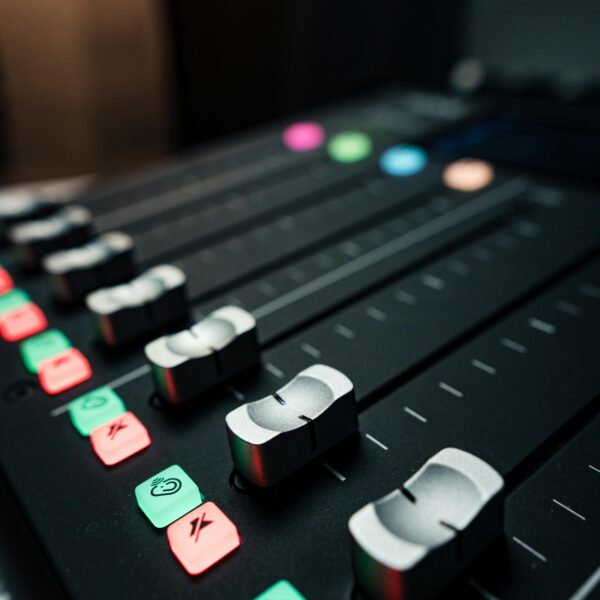Field recording is an art that thrives on capturing authentic, real-world sounds. But here’s the thing—your choice of microphone can make or break the experience. Did you know that some field recording microphone can capture sounds as low as 10Hz, frequencies you can barely feel? That’s the level of precision professionals work with!
After testing countless mics, Today I’ve finally finalized and came to a conclusion on what are the 7 best field recording microphones that actually delivered me exceptional sound quality and reliability. If you’re recording wildlife, soundscapes, or interviews, these picks have you covered. Let’s find your perfect match!
Criterion for Selection
Directional Capability
Shotgun mics, like the Sennheiser MKH 416, are perfect for isolating specific sounds. Their narrow focus cancels out background noise effectively.
But if you’re after an ambient, 360° vibe, an omnidirectional mic like the Sennheiser MKH 8020 is unbeatable.
Fun fact: omnidirectional mics can capture sound frequencies so low, they record the “heartbeat” of nature—a stunning 10Hz.
Sound Quality
Low self-noise is a must! When you’re recording something as quiet as bird calls at dawn, every hiss or hum from your mic gets amplified.
The RØDE NT55 delivers crisp sound with minimal noise, but here’s the catch: it’s not very forgiving if you’re a beginner and don’t know how to position it. 🎙️
Durability and Weather Resistance
Field recording often means braving unpredictable conditions—rain, wind, or even extreme cold. A microphone like the RØDE NTG3 stands out here.

It uses RF-bias technology, making it moisture-resistant. But let me tell you, not every mic survives a humid rainforest—
I once had to pack my gear mid-recording because the cheaper mic I used failed miserably.
Portability
Portability is something we often underestimate. I learned this the hard way while hiking uphill with heavy gear.
Compact options like the Clippy EM272 or Lom mikroUsi are lifesavers. They’re tiny but powerful.
However, don’t expect them to compete with the audio range of bigger shotgun mics.
Power Requirements
Some microphones need phantom power, which your recorder or mixer must provide. Others, like handheld devices with built-in mics, run on AA batteries. It’s a practical choice if you’re heading to remote locations without power sources.
Understanding these factors ensures you’ll get the right microphone for the job. Trust me, making a mindful choice here saves you frustration later.
The 7 Best Microphones for Field Recording
This table focuses on the all microphones’ types and key features.
| Microphone | Type | Key Features |
|---|---|---|
| Sennheiser MKH 8020 | Omnidirectional condenser | Wide frequency response (10Hz to 60kHz), low self-noise, moisture-resistant design. |
| RØDE NT55 Matched Pair | Small-diaphragm condenser | Interchangeable cardioid and omnidirectional capsules, versatile filters. |
| Sennheiser MKH 416 | Shotgun condenser | Highly directional, excellent off-axis rejection. Ideal for isolating specific sounds. |
| Audio-Technica AT2020 | Cardioid condenser | Affordable, wide frequency response, versatile for different recording applications. |
| RØDE NTG3 | Shotgun condenser | Broadcast-grade sound quality, RF bias technology, low self-noise. Great for challenging conditions. |
| Clippy EM272 | Lavalier microphone | Compact size, affordable, good sound quality. Ideal for discreet field recordings. |
| Lom mikroUsi | Lavalier microphone | Small form factor, high sensitivity, excellent for capturing subtle environmental sounds. |
Now let’s start the in depth analysis and review
Sennheiser MKH 8020
The Sennheiser MKH 8020 is a dream come true for anyone recording natural soundscapes or ambiance. This omnidirectional condenser microphone captures an incredibly wide frequency range, from 10Hz to 60kHz.
That means it doesn’t just hear what we hear—it picks up the ultra-low and ultra-high frequencies, giving your recordings a richness most mics can’t match.
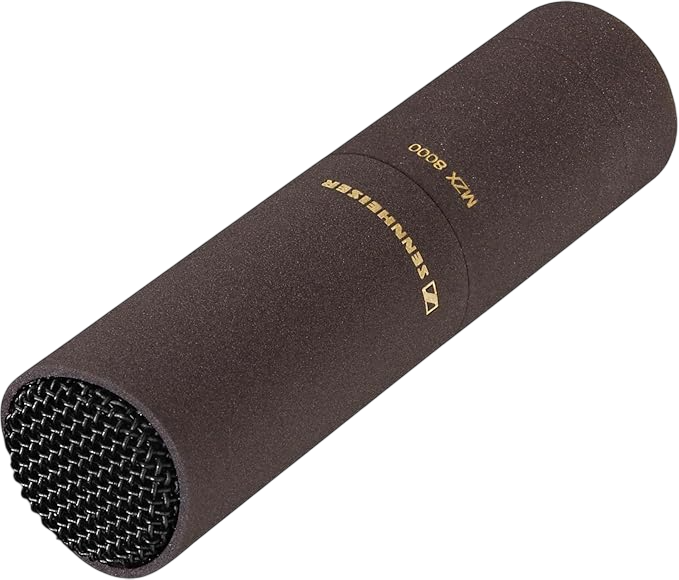
One unique thing about this mic?
It’s designed with RF technology, making it resistant to moisture and humidity. This is a lifesaver for recording in wet environments like rainforests or misty mornings.
I’ve used it during early-morning field recordings, and the clarity was jaw-dropping. The sound of dew drops hitting leaves? Pure magic. 🌿
But let’s be real—
it’s not cheap. At around $1,400, this isn’t for hobbyists.
Another standout feature is its low self-noise of just 10dBA. This makes it perfect for subtle sounds like rustling leaves or distant birds.
However, because it’s omnidirectional, it can’t isolate specific sounds like a shotgun mic. If you’re recording in noisy areas, you might end up with more background noise than you want.
Also, this mic works best with phantom power, so you’ll need a recorder that supports it. But once you set it up, the results are professional-grade.
The build quality is solid, though not the most portable option. Still, for pristine, natural audio, the Sennheiser MKH 8020 is worth every penny. 🎙️
RØDE NT55 Matched Pair
The RØDE NT55 Matched Pair is a dream come true for anyone looking for versatility in field recording.
What makes it special?
It comes with interchangeable capsules—cardioid and omnidirectional. This means you can switch between isolating a specific sound or capturing an entire soundscape, all with one mic.
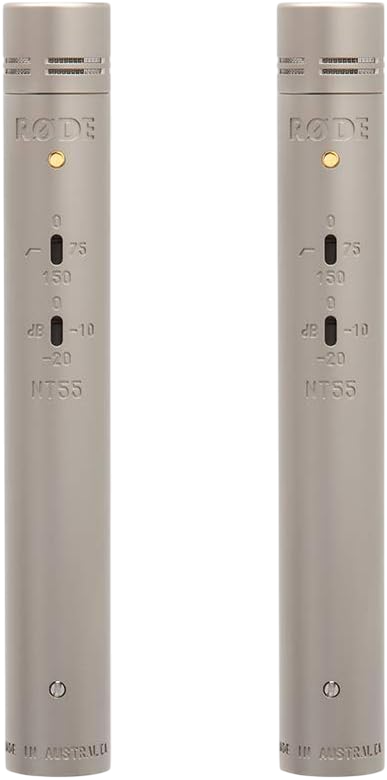
I’ve used the NT55 while recording natural soundscapes in a park, and its ability to pick up subtle details like distant bird calls blew me away.
The frequency range of 20Hz to 20kHz ensures you capture both the low rumble of distant thunder and the high chirps of insects.
However, here’s a little heads-up: it’s very sensitive, which means if you’re not careful with positioning, you might record things you don’t want—like your own breathing.
What’s also cool is the three-position pad (-10dB, -20dB, flat), which helps manage louder sound sources.
This came in handy when I was recording near a waterfall. Without the pad, it would’ve just been a mess of distortion.
The high-pass filter also saved me from picking up too much low-frequency rumble, like distant traffic noises, which can ruin a nature recording.
But let’s talk durability—it’s good but not perfect. The NT55 isn’t weatherproof, so you need to be cautious in damp environments.
I once got caught in a drizzle and had to stop recording because I didn’t want to risk damage. If you’re frequently out in unpredictable weather, you might want something like the RØDE NTG3 instead.
For the price ( $829 for the matched pair), you’re getting pro-level flexibility and quality. If you’re into recording music, ambiance, or even quiet sounds like rustling leaves, this mic shines. But if you need something robust for heavy outdoor use, you might need a different option. Still, for controlled settings, it’s one of the best. 🎙️
Sennheiser MKH 416
The Sennheiser MKH 416 is a legend among shotgun microphones, and for good reason. It’s designed to isolate sound like a pro. With its hypercardioid polar pattern, it picks up what’s in front and rejects everything else—perfect for noisy environments or when you need to focus on a single sound source. 🎙️
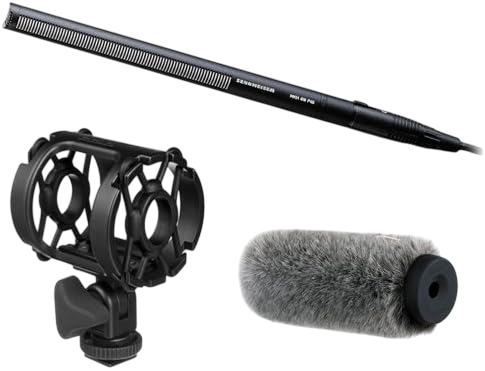
This mic is compact, durable, and weather-resistant, making it a go-to for filmmakers and field recorders.
Did you know it’s a favorite for Hollywood productions? That says a lot about its quality. I’ve used it to record interviews on busy streets, and the clarity was jaw-dropping.
Background chatter? Almost gone.
One standout feature is its frequency response (40Hz to 20kHz). It handles everything from deep bass to crisp highs effortlessly.
But here’s a catch: its price.
At around $1,000, it’s an investment, not a casual buy. Also, it’s quite sensitive to handling noise, so you’ll need proper mounts or a boom pole for the best results.
Still, if you’re serious about field recording and want unmatched precision, the MKH 416 won’t disappoint. It’s like having a laser-focused ear in your gear bag.
Clippy EM272
The Clippy EM272 might be small, but it packs a punch for field recording. It’s a lavalier microphone, meaning it’s lightweight, discreet, and easy to use. If you’re looking to capture ambient sounds or natural environments without hauling heavy gear, this mic is a game-changer.
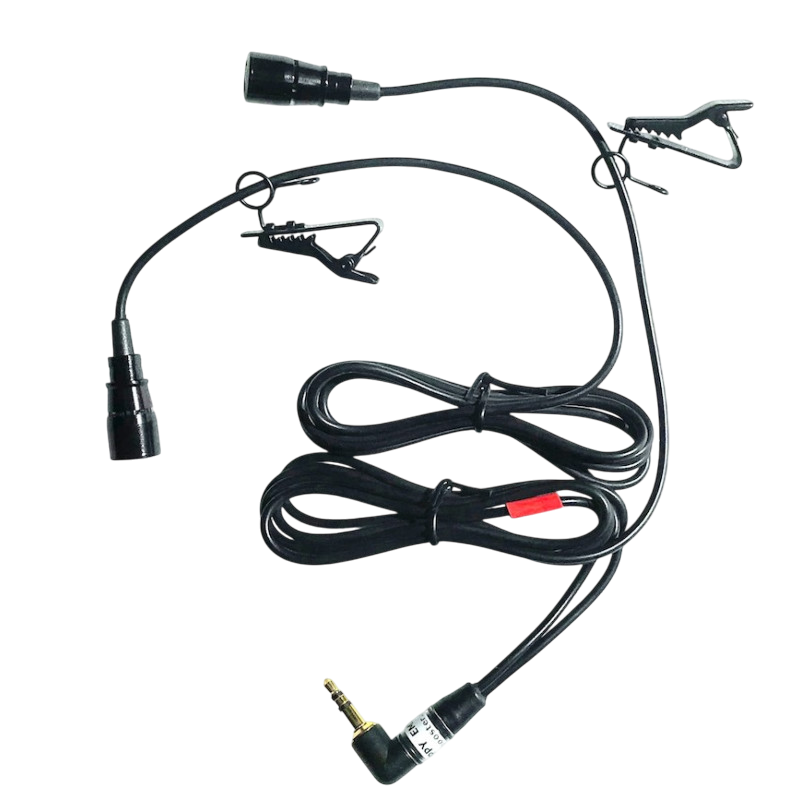
What makes the EM272 stand out is its use of the Primo EM272 capsule—a favorite among nature recordists. It’s known for its low self-noise of 14 dB(A) and its ability to capture subtle sounds with impressive clarity.
If you’re recording rustling leaves or distant bird calls, this mic doesn’t disappoint. I’ve used it for a nature walk project, and it amazed me by picking up even the faintest wind chime in the background.
However, it’s not perfect. The EM272 lacks the directional focus of shotgun mics like the Sennheiser MKH 416, so it’s not great if you’re trying to isolate a single sound in a noisy environment.
And while it’s affordable (around $111), the build quality is not as rugged as higher-end options. Don’t drop it—it’s not going to survive a hard fall!
This mic is perfect for beginners or hobbyists who want a reliable and budget-friendly option. And since it runs on plug-in power, you don’t need external phantom power or bulky setups. That simplicity is a huge win. 🎙️
If you’re just stepping into field recording or need a portable, affordable solution for ambient soundscapes, the Clippy EM272 deserves a spot in your kit. It may be tiny, but it delivers big results.
Audio-Technica AT2020
The Audio-Technica AT2020 is proof that you don’t need to spend a fortune to get reliable sound quality. This cardioid condenser microphone is a favorite among budget-conscious creators.
Why?
Because it delivers studio-level performance at a fraction of the price, making it an excellent choice for beginners and casual field recordists.
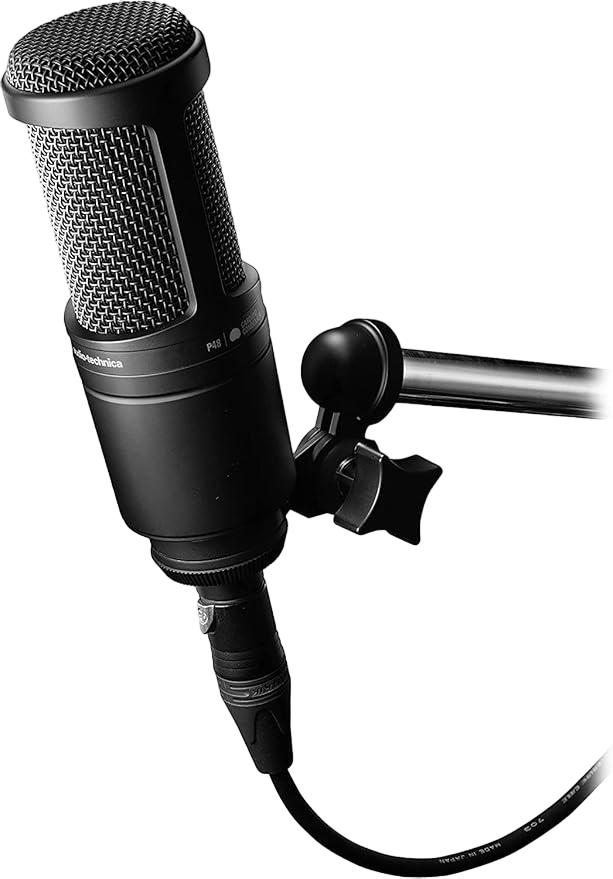
Its frequency response of 20Hz to 20kHz ensures you capture a wide range of sounds, from low rumbles to crisp highs. While it’s primarily designed for studio use, its sturdy build handles on-the-go recordings surprisingly well.
I once used it for a quick interview on a windy day—paired with a foam cover, it held its own against mics twice its price.
However, there’s a catch:
it’s not as portable as some other field options. At around 12.1 ounces, it’s heavier than compact mics like the Clippy EM272, and it requires phantom power, so you’ll need a compatible recorder or audio interface.
Critics argue it isn’t specialized enough for professional fieldwork, and they’re right. If you’re after ultra-directional audio or extreme durability, this isn’t your mic. But for $99 (or less during sales!), it’s an incredible starting point for ambient sounds, podcasting, or even voiceovers.
If you’re looking for value-packed versatility, the AT2020 is a solid choice. It won’t replace high-end shotgun mics, but for many use cases, it’s all you really need.
Plus, it feels good knowing you’ve got a mic trusted by pros without breaking the bank. 🎙️
RØDE NTG3
The RØDE NTG3 is a broadcast-grade shotgun microphone, and let me tell you—it’s built like a tank. It’s famous for its RF-bias technology, which makes it resistant to moisture and humidity.
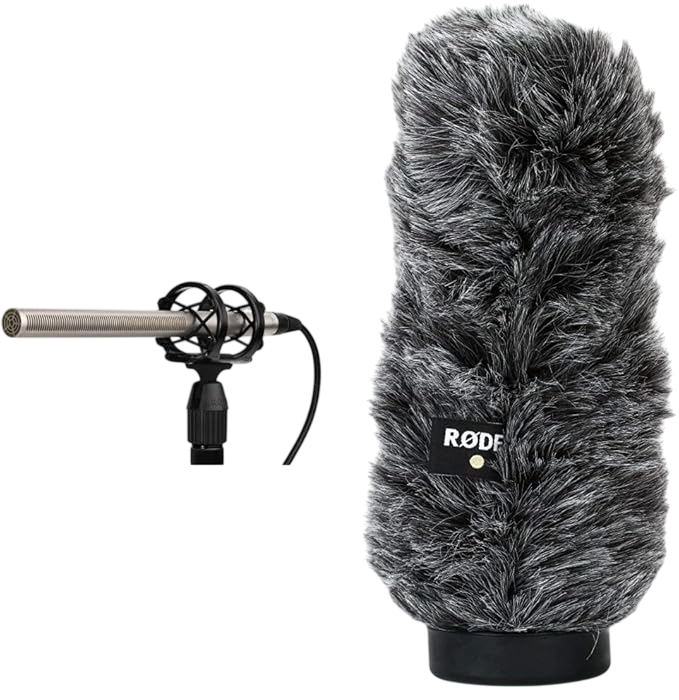
If you’re recording in damp forests or rainy weather, this mic won’t let you down. I once used it during a drizzle while recording a documentary, and unlike my gear bag (which was soaked), the NTG3 stayed flawless.
Its sound quality is warm and natural, with minimal self-noise (13dBA). That means it captures subtle details beautifully without adding any hiss.
However, its sound profile leans toward the mid-range, which might not appeal to everyone. If you’re looking for exaggerated highs or sharp tones, this might feel “too smooth.”
What’s even more impressive is its build quality. It’s sleek but sturdy, weighing 163g, which is pretty light for a shotgun mic. Still, holding it on a boom pole for extended shoots can be tiring. 🎙️
But here’s a drawback—
it needs phantom power, so make sure your recorder supports it or you carry a compatible power source.
One great thing is its ability to reject noise from the sides, focusing sharply on the source. It’s like having laser precision for audio. This makes it perfect for isolating dialogue or specific sounds even in crowded environments.
If you’re serious about field recording this Microphone is a nice investment. It’s not cheap, but its durability and performance justify the price.
Pro tip: Pair it with a high-quality windshield like the RØDE Blimp for windy conditions. You won’t regret it! 😊
RØDE Lavalier II
The RØDE Lavalier II is a game-changer in the world of lavalier microphones, designed with versatility and premium sound in mind. If you’re after a mic that balances compact design with professional-grade audio, this one deserves a spot in your kit.
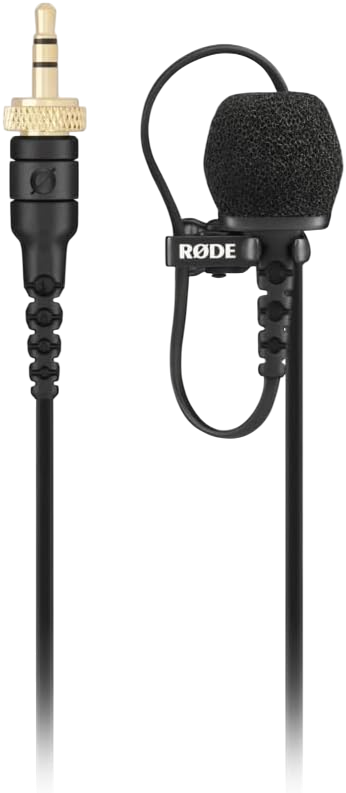
One of its standout features is the flat frequency response, which ensures that your recordings are natural and clear. If you’re capturing environmental ambiance or conducting an interview in the field, the Lavalier II handles it effortlessly.
Unlike some budget lavaliers that can sound tinny or overly bright, this mic delivers a balanced tone, even in challenging conditions.
The mic’s ultra-low profile makes it ideal for discreet placement. It’s so small and sleek that you can easily clip it to clothing without drawing attention.
I’ve used it in situations where the microphone had to remain invisible, and it worked like a charm.
But here’s a tip: always carry extra clips, as they can be fragile under constant use.
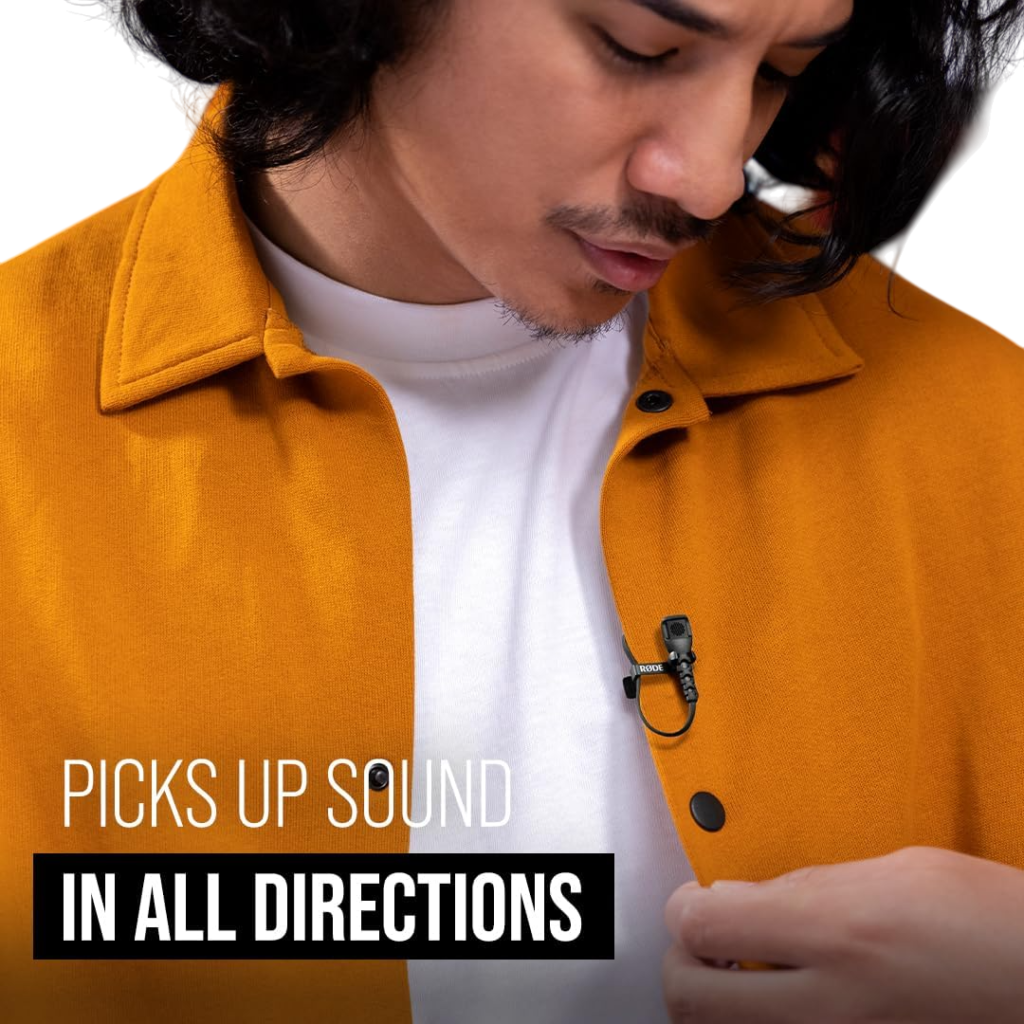
It also comes with a professional-grade pop shield and furry windshield, making it suitable for outdoor recording.
While many lav mics struggle with wind noise, the Lavalier II does a decent job at minimizing it—though it’s still not perfect for extreme conditions.
A unique feature is its compatibility with multiple devices, thanks to its 3.5mm TRS connector. Whether you’re plugging it into a field recorder, camera, or smartphone, it’s ready to perform.
However, some users note that it might need an adapter for certain professional setups, so double-check compatibility.
For its price point,
it’s a fantastic choice for field recording, interviews, and even vlogging. 🎙️ It’s not just versatile—it’s reliable. If you’re looking for a lavalier mic that combines discretion with top-notch sound, the RØDE Lavalier II won’t disappoint.
Which one is the perfect field recording mic for you?
Choosing the right field recording microphone depends entirely on what you’re recording. Each mic shines in different scenarios, so let’s break it down.
If you’re after natural ambiance like rain, forest sounds, or distant thunder, the Sennheiser MKH 8020 is a dream. Its omnidirectional pattern picks up sound from all directions, giving a wide, immersive feel. But it’s pricey, so unless you’re a pro or working on high-end projects, it might feel like overkill. For tighter budgets, consider the Clippy EM272, which does a great job at a fraction of the cost.
For dialogue or isolating sounds in noisy environments, the Sennheiser MKH 416 is a lifesaver. It’s a shotgun mic with amazing focus and off-axis rejection, perfect for interviews or capturing wildlife calls without background clutter. But here’s the catch: its highly directional nature means you need to aim it carefully. I once missed half of an interview because I didn’t monitor its position properly! 🎯
Recording in extreme conditions? The RØDE NTG3 is your best bet. Its moisture-resistant design thrives in humid or wet environments, like tropical rainforests or snowy landscapes. However, its length can be awkward for handheld use—definitely pair it with a sturdy boom pole for comfort.
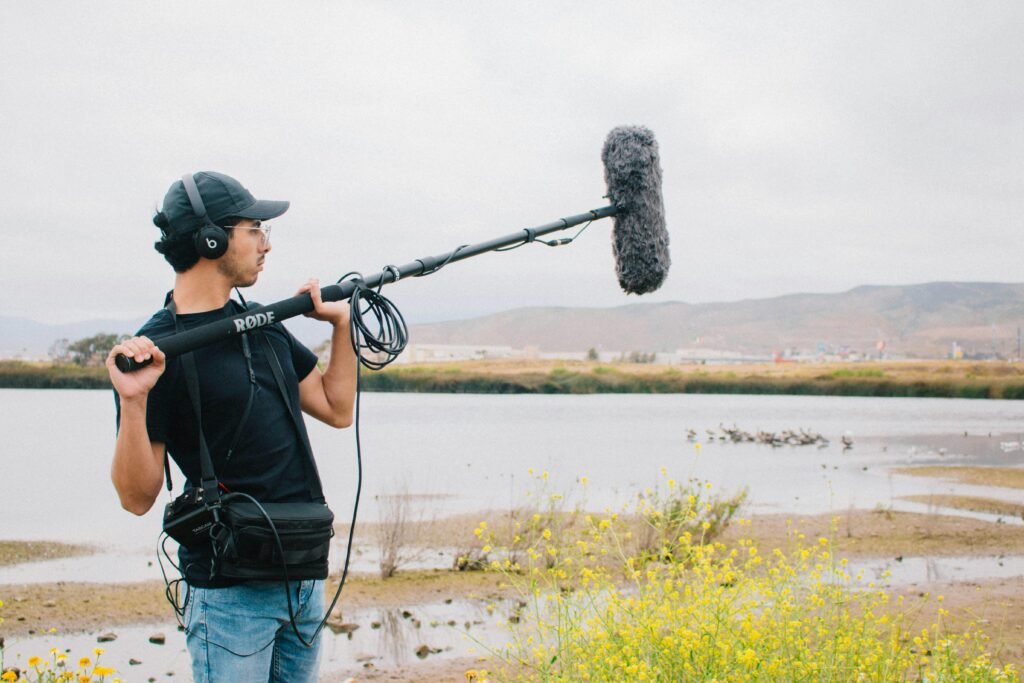
Want a versatile option for indoor and outdoor recording? The RØDE NT55 matched pair offers interchangeable capsules for both cardioid and omnidirectional patterns. You can switch between focusing on one source or capturing a wide sound field. This flexibility makes it a favorite for musicians and filmmakers. Just remember, it needs phantom power, so don’t forget your recorder or power source.
For budget-friendly all-rounders, the Audio-Technica AT2020 delivers solid performance. It’s not as rugged as the others, but it’s excellent for beginners experimenting with field recording. And if you’re into ultra-compact setups, the Lom mikroUsi is a hidden gem. I once used it to record insects buzzing, and its sensitivity blew me away. However, be careful—it’s fragile, so pack it with care.
Ultimately, the right mic depends on your recording goals, environment, and budget. Always test your setup before hitting the field—it saves time and disappointment! 🎙️
Practical Tips for Using Field Recording Microphone
Using a field recording microphone can be simple, but small tweaks make a big difference.
For starters,
always use proper wind protection like dead cats or blimps. These furry covers might look odd, but they can cut out up to 90% of wind noise! I once recorded waves on a breezy day without one,
and the result? A useless track full of harsh wind distortion. Lesson learned.
Always monitor your recordings in real-time with headphones. Many people skip this, thinking they’ll fix issues later,
but trust me—
it’s a rookie mistake. Imagine spending hours recording, only to find faint crackling or distant interference later. Pro tip: Use closed-back headphones for better isolation, like the Audio-Technica ATH-M50X.
Experimenting with microphone placement is a game-changer.
Did you know that tilting a shotgun mic slightly off-axis can reduce harsh reflections in noisy spaces? I tried this trick during a busy market recording, and the clarity improved instantly.
Don’t forget to test your gear before heading out. According to a 2023 survey, 60% of field recordists reported battery issues during sessions.Carry extra batteries or power banks—it’s a lifesaver. And if you’re recording in humid conditions, choose moisture-resistant mics like the RØDE NTG3 to avoid condensation problems.
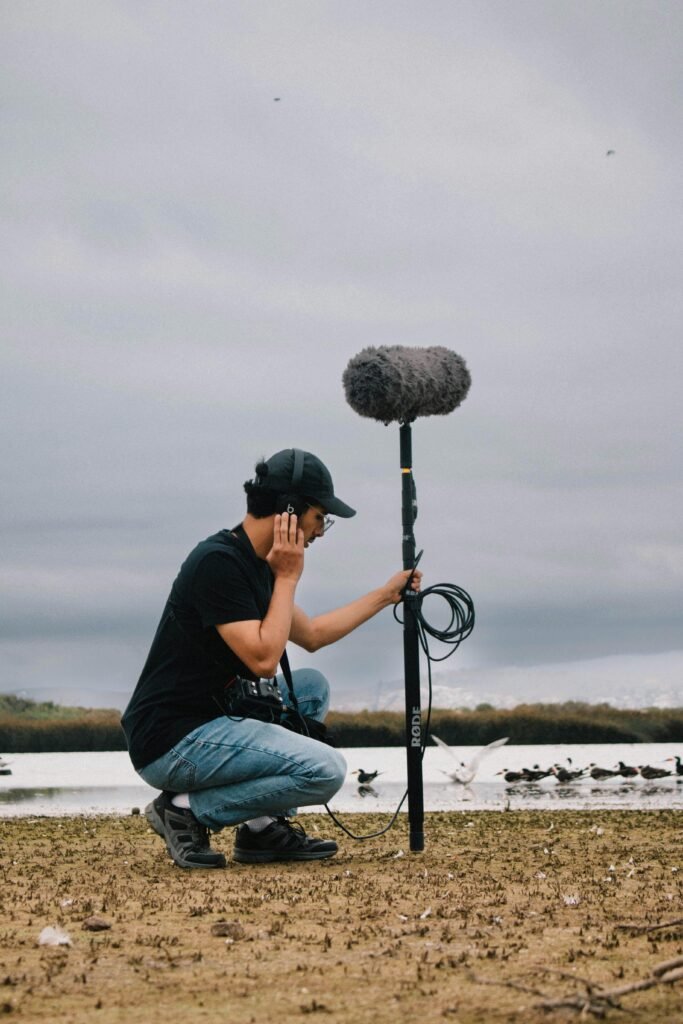
Lastly, embrace the environment. Use the natural acoustics to your advantage. Record near walls, under trees, or even inside caves for unique sound textures.
And hey, don’t be afraid to get creative—sometimes, the most surprising sounds come from unusual setups! 🎙️
Frequently Asked Questions
1. Which microphone is best for beginners in field recording?
If you’re starting, the Audio-Technica AT2020 is a solid pick. It’s affordable and offers great sound clarity for its price. You won’t get the ultra-low self-noise of premium mics, but it’s perfect for learning the ropes.
2. Are there budget options for professional-quality field recordings?
Absolutely! The Clippy EM272 is a budget-friendly gem. It’s compact, discreet, and surprisingly good at picking up ambient sounds.
3. Can I use handheld recorders with built-in microphones instead?
Yes, but there’s a catch. Handheld recorders like the Zoom H5 or Tascam DR-40X are versatile. Their built-in mics can capture decent stereo sound, but they can’t match dedicated microphones for quality or directional focus.
Field recording can be tricky, but asking the right questions helps you choose gear that works for your unique needs. Don’t rush it—test and experiment to find your perfect setup! 😊
Conclusion
In conclusion, these top field recording microphones offer a range of features tailored to diverse recording environments. Whether you need a highly directional shotgun mic like the Sennheiser MKH 416 or a portable and affordable option like the Audio-Technica AT2020, there’s something for every need. With options like the Sennheiser MKH 8020, capturing crystal-clear environmental sounds in challenging conditions has never been easier. These microphones are trusted by professionals in sound design, wildlife recording, and filmmaking.
Related Posts
- Best USB Microphone Models Under $150
- Best Microphone Under $100
- Best Dynamic Microphone for podcasting
- Best USB Mic for beginners – Blue Yeti USB Microphone vs Fifine XLR USB Dynamic Microphone
- Maono Microphone Review
- Best Under $100 Condenser Mic
- Best of the Most Expensive Microphones to Buy
- Best Wireless Mics
- Different Types of Microphones and Their Features



